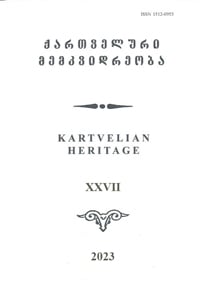THE STALINIST MODEL OF CHURCH GOVERNANCE (1940S-1980S)
DOI:
https://doi.org/0.52340/PUTK.2023.27.09Keywords:
The Georgian Church in the 1940s–1980s, the Stalinist model of church governance, Soviet Russia’s anti-Georgian policyAbstract
The Bolsheviks, who took control of Russia following the October Revolution of 1917, launched a vicious campaign against the Russian Orthodox Church. This conflict intensified even more after Tikhon, the Patriarch, denounced the Bolshevik leadership. Thousands of churches and monasteries were closed, and thousands of clergy were executed. To ensure destruction within the church itself, the so-called Renovationists movement was promoted. Following Bolshevik Russia’s invasion of Georgia in 1921, the Revkom, or Georgian Revolutionary Committee, the local puppet government, outlawed the Georgian Church by order on April 15, 1921. Due to Catholicos-Patriarch Ambrose’s memorandum to the Genoa Conference, in which he implicated the occupying authorities, the aggressive anti-religious campaign intensified in Georgia. During the years 1925-1927, the Soviet authorities exercised total control over the Church in Russia and Georgia but allowed compromises regarding the Church during the Second World War. However, in 1943, J. Stalin formed the Council for Religious Affairs, attached to the USSR Council of People’s Commissars, and named General Georgii Karpov of the Security Committee as its head. The Council had branches in Soviet republics. For example, the Georgian Orthodox Church was supervised by the Commissioner of Religious Affairs of the Council of Ministers of Georgia. Stalin initially denied that the Council for Religious Affairs resembled the position of Oberprokuror (or Ober-Procurator, Chief Procurator) held during Peter I’s reign; however, it was later discovered that the authorities used this structure to exert extensive control over the Church, ensuring that no one, from deacon to patriarch, could be ordained without their approval. The Soviet Union’s Council for Religious Affairs and, later, Georgia’s office of Commissioner of Religious Affairs were only abolished in 1989-1990. Former KGB General K. Kharchev plainly stated in one of his interviews, “Our goal involved infiltrating the church with corrupt individuals who lacked integrity and moral values. The Stalinist model of Church governance is, regrettably, bearing fruit now.

